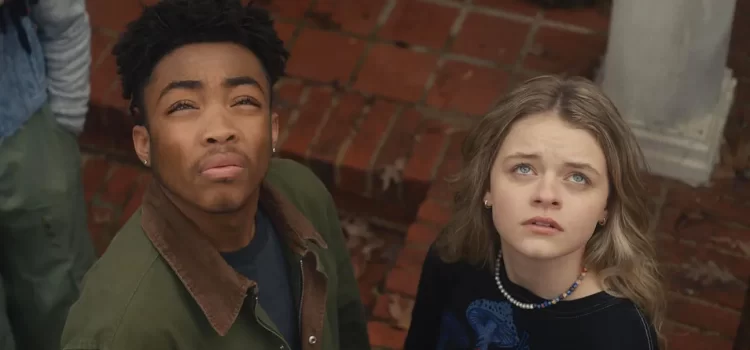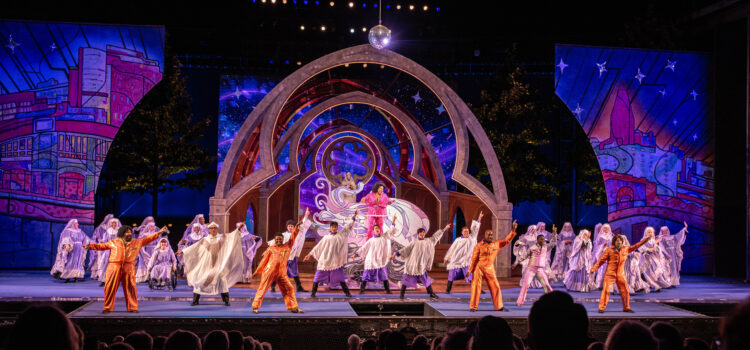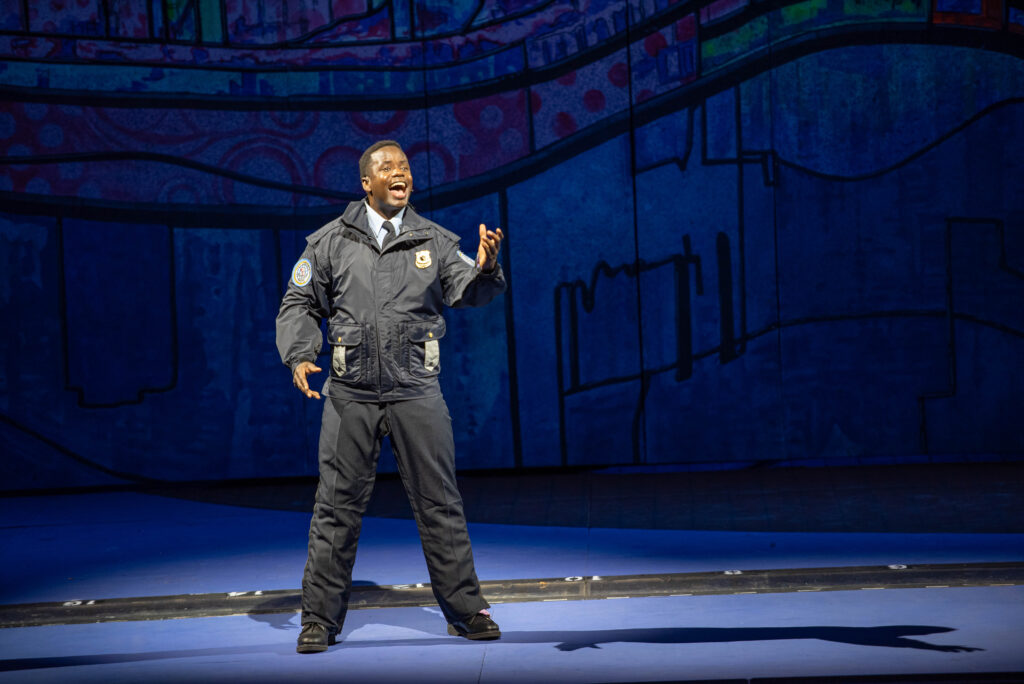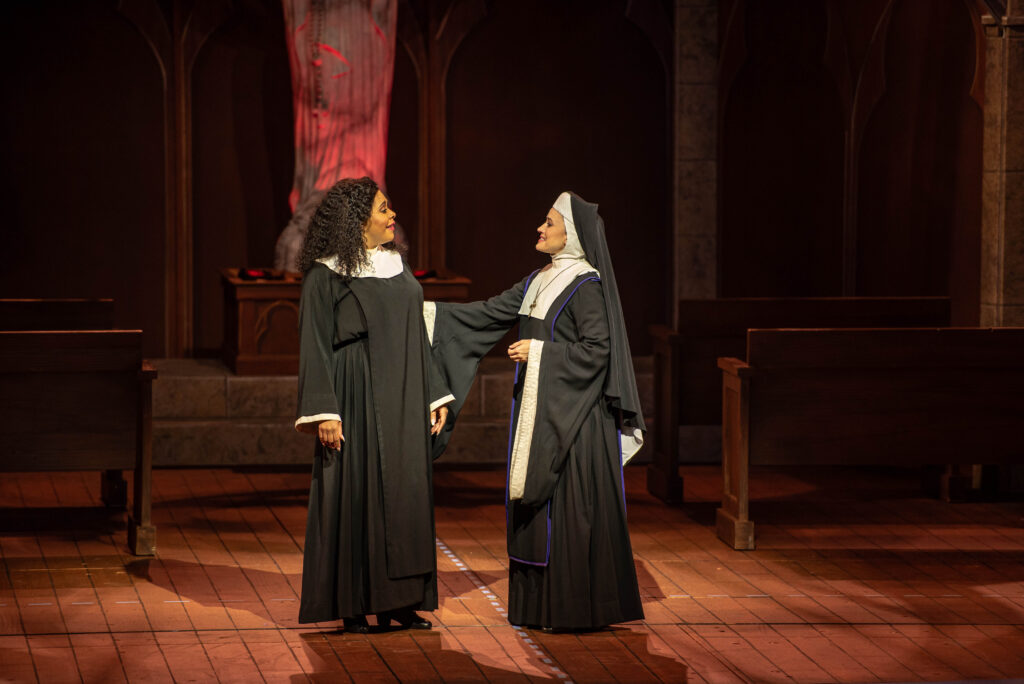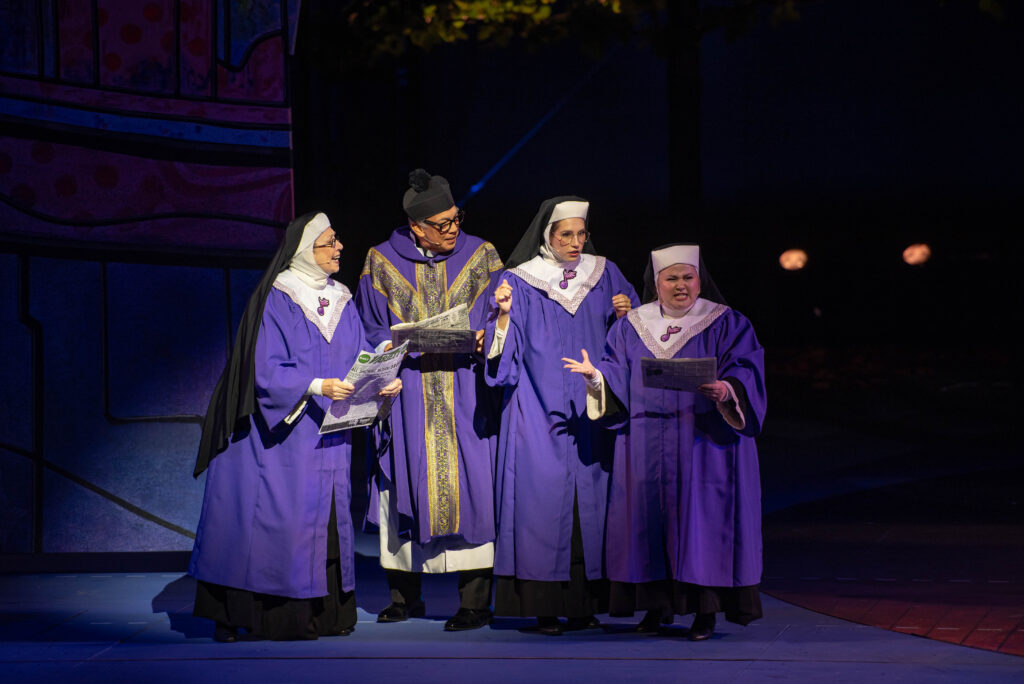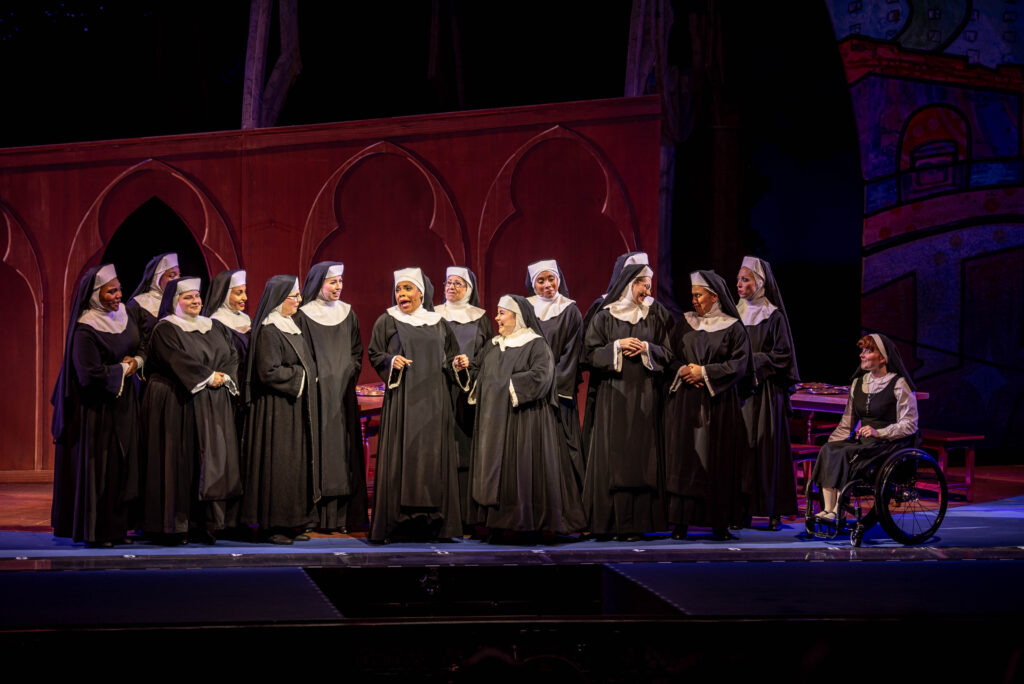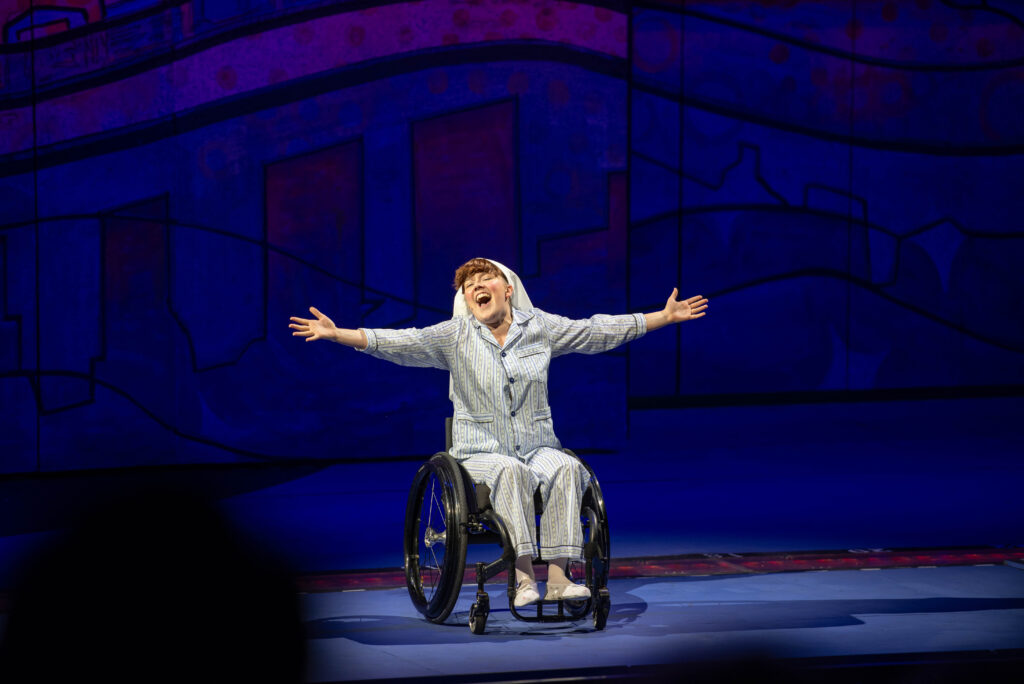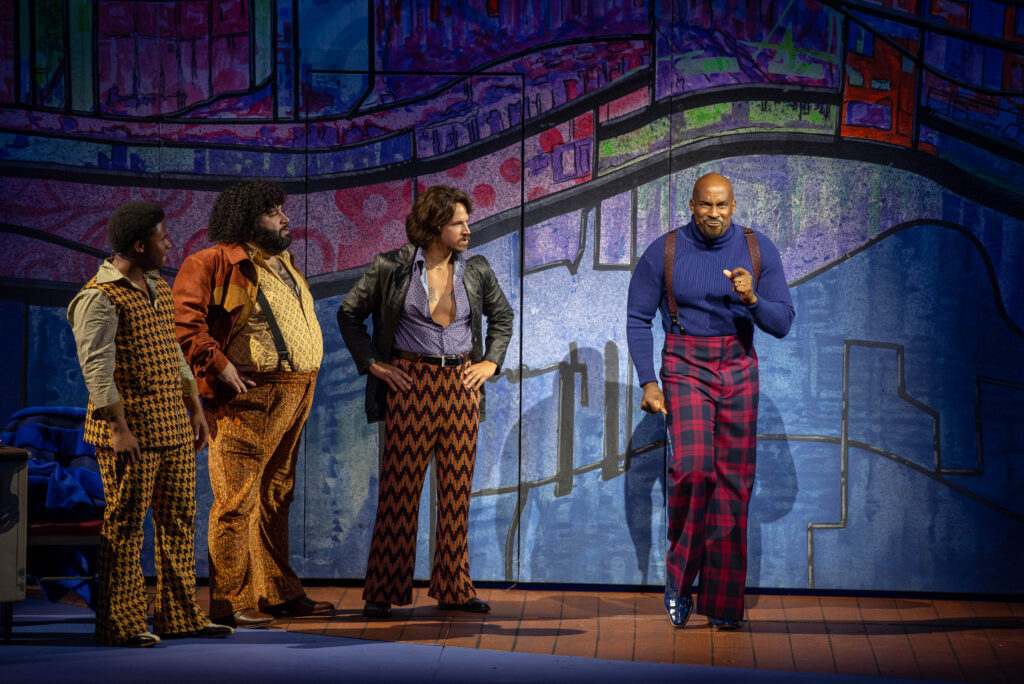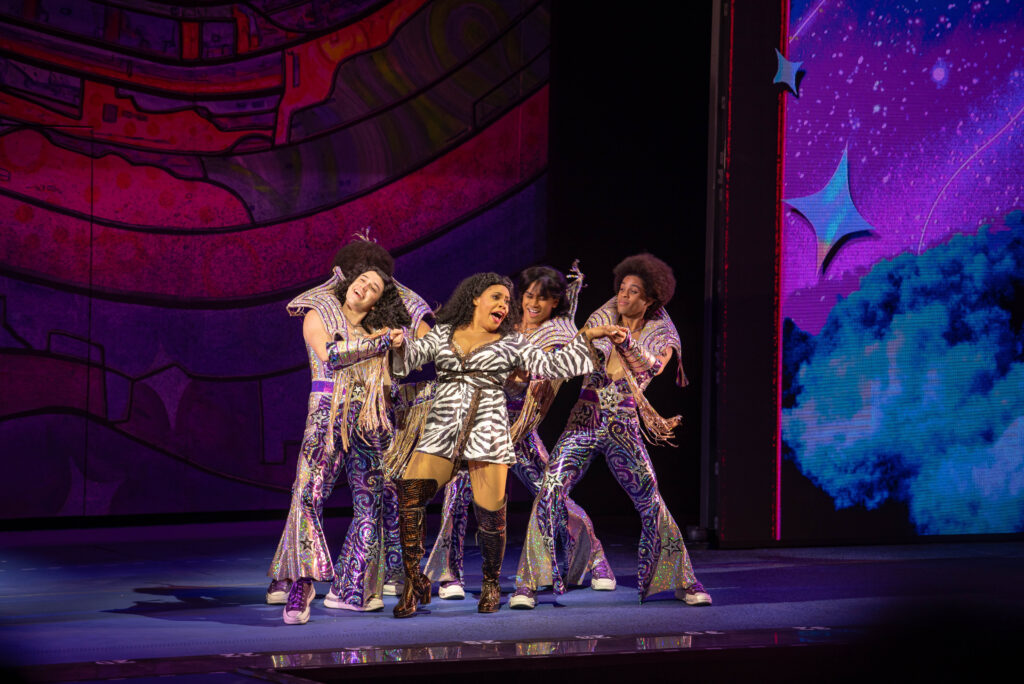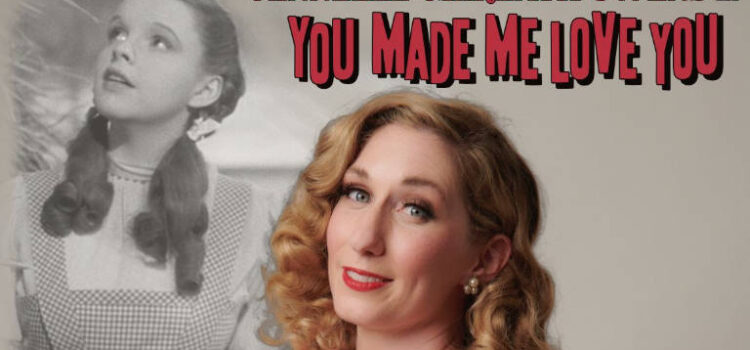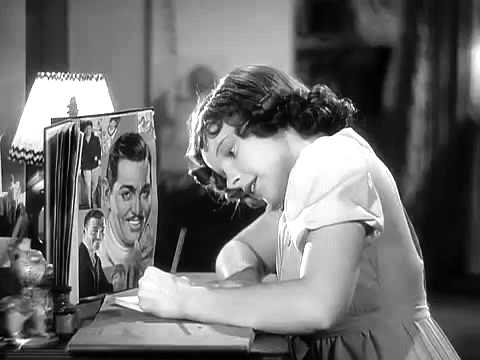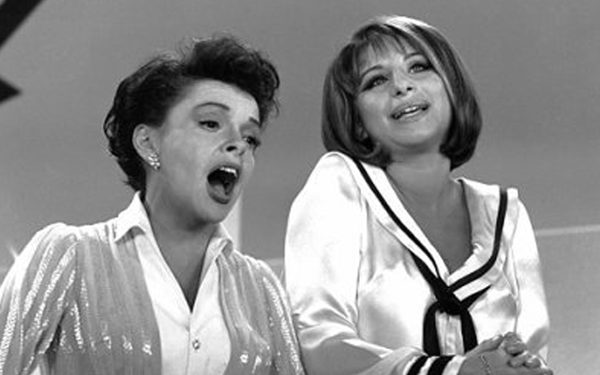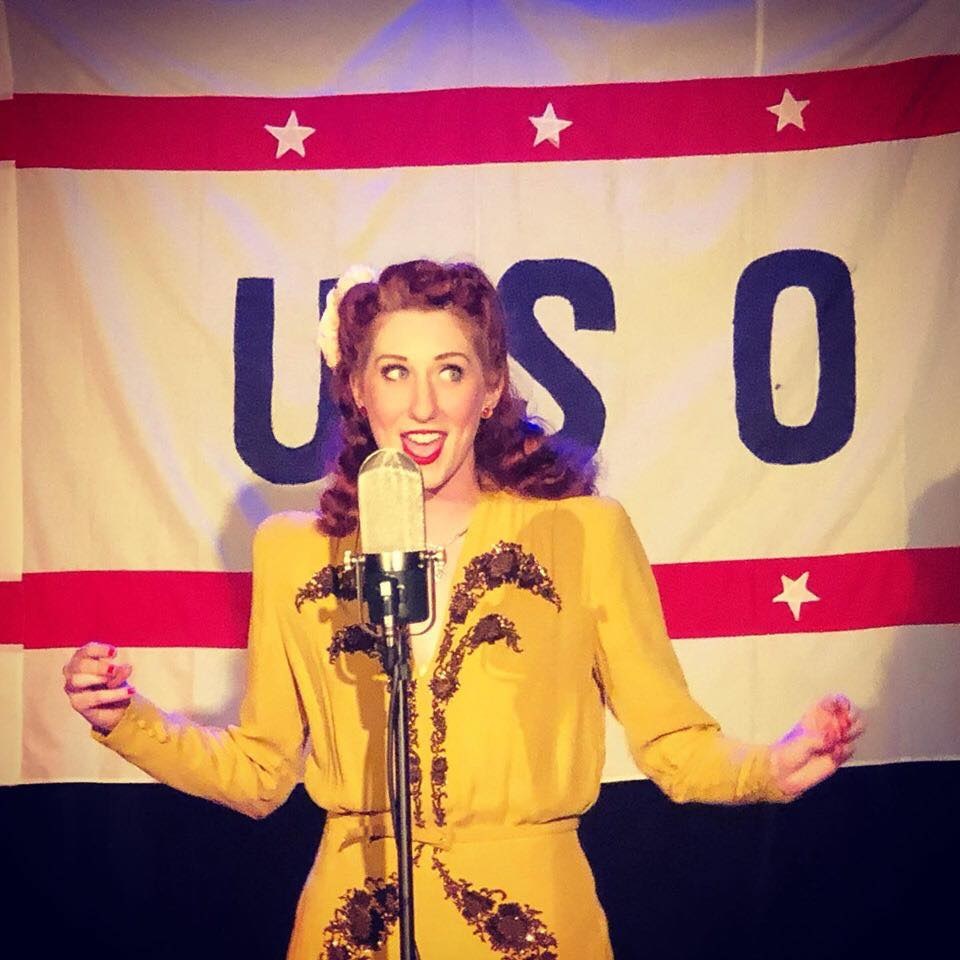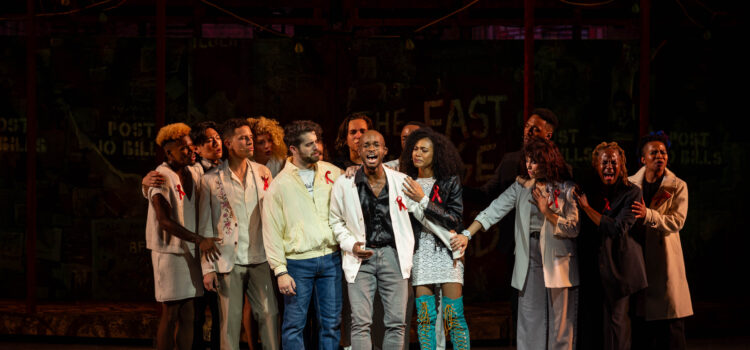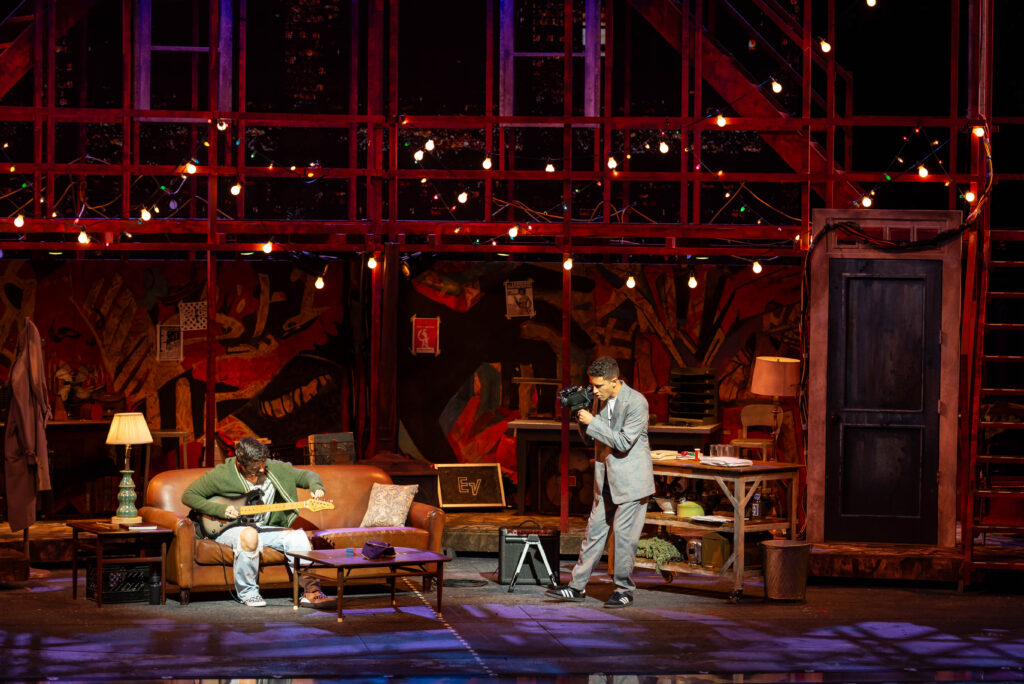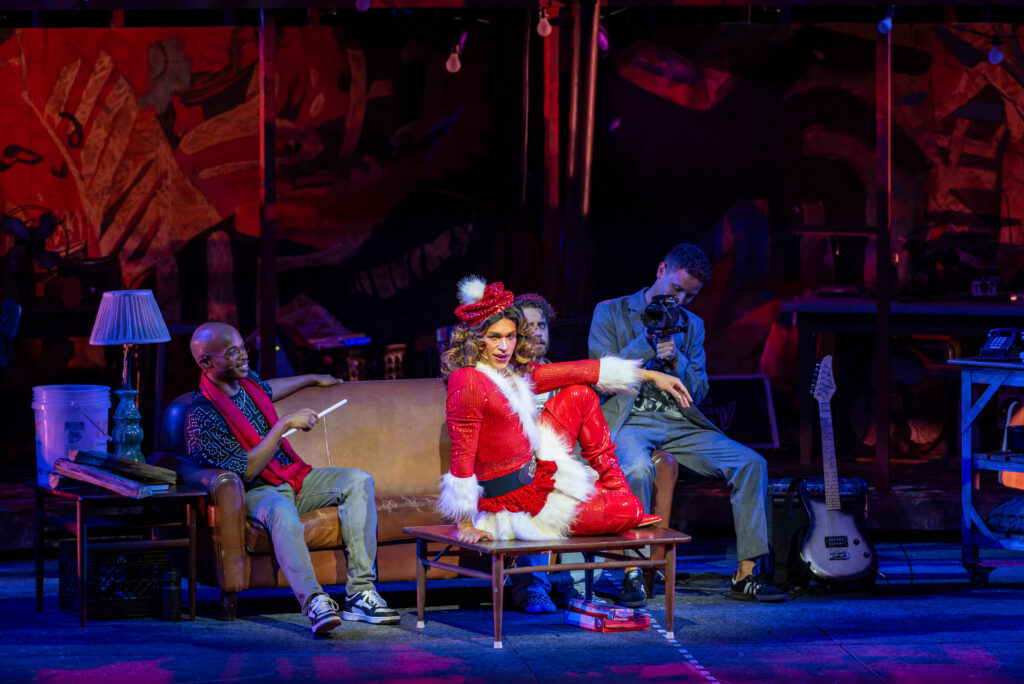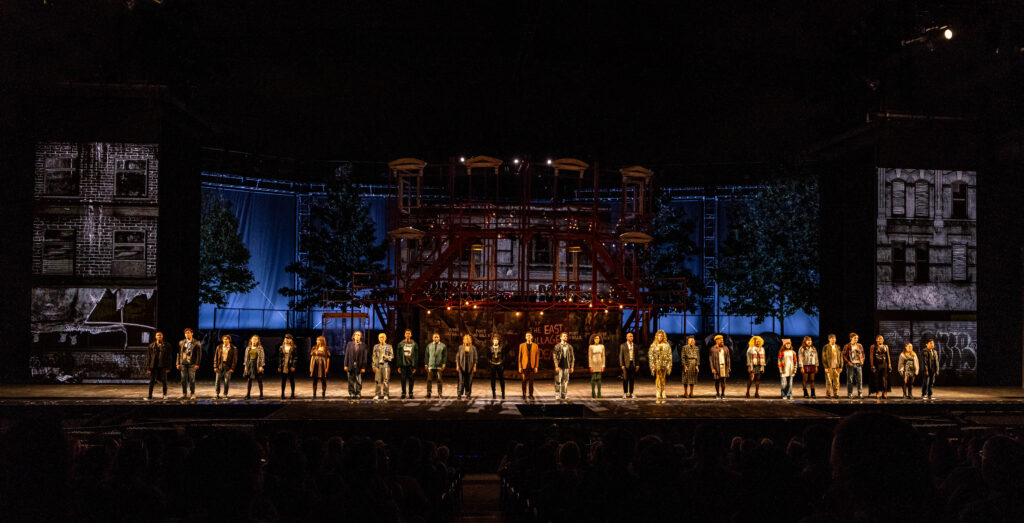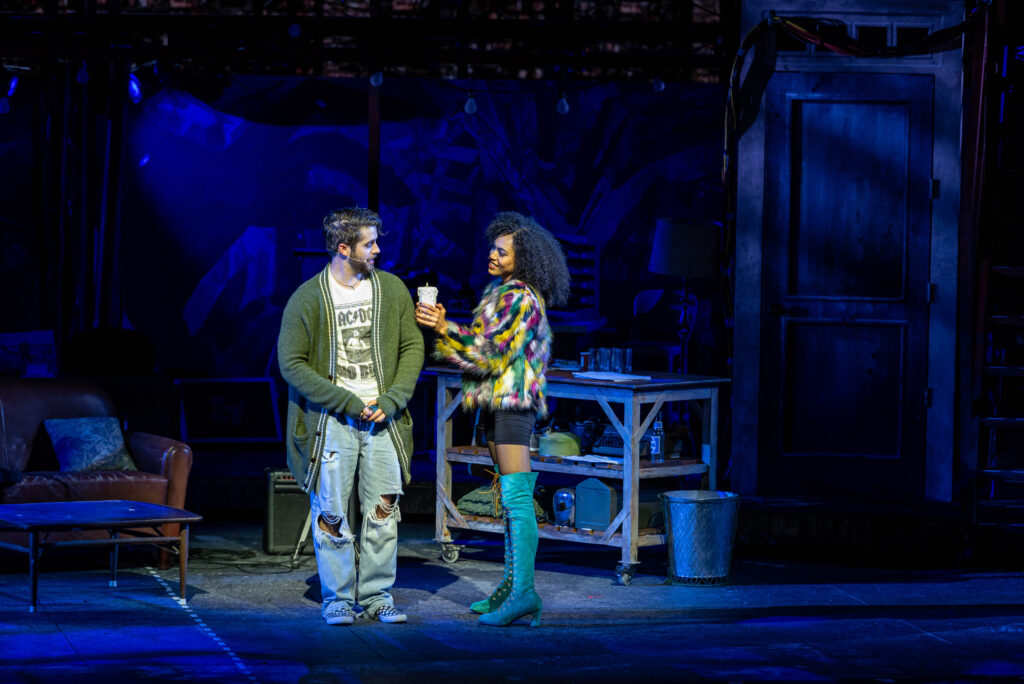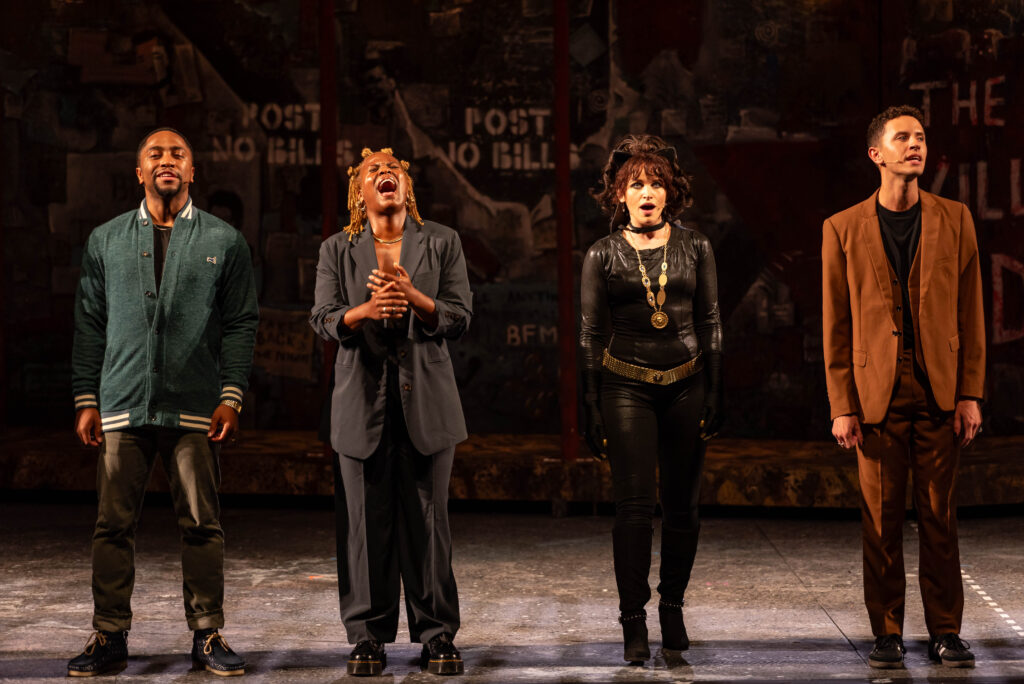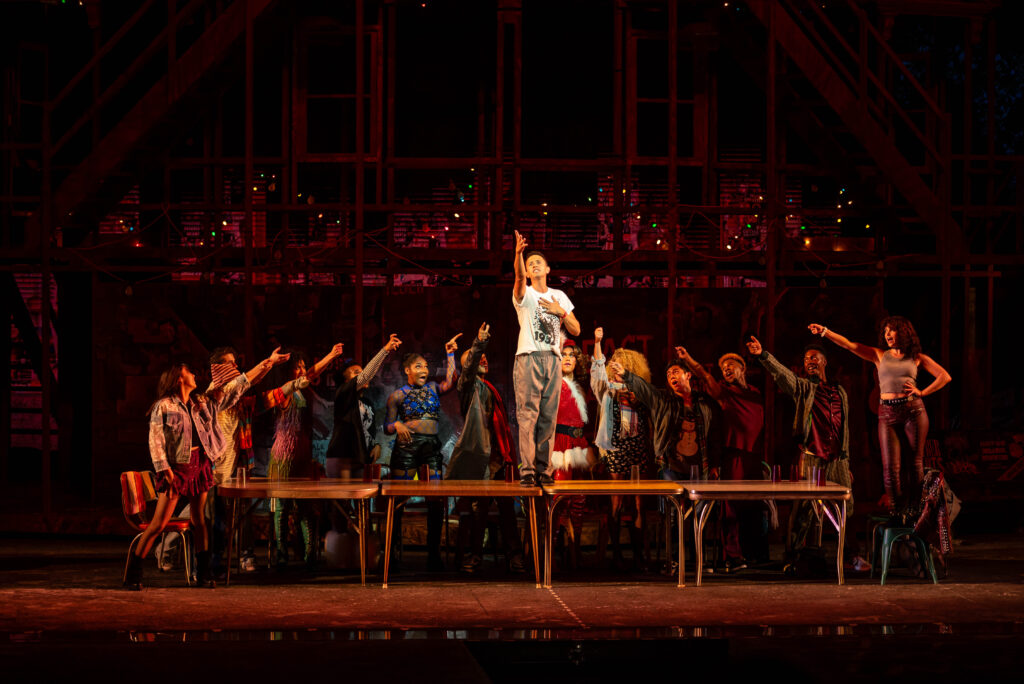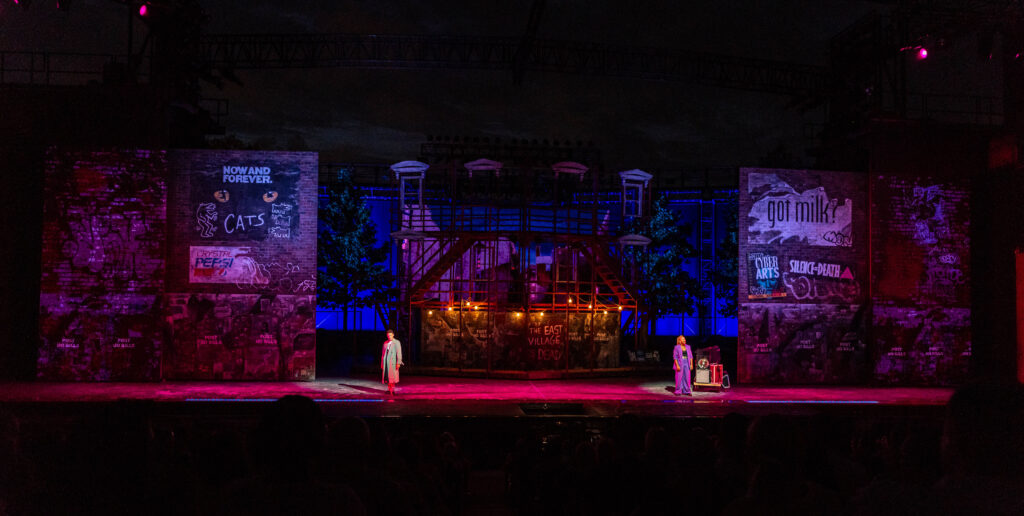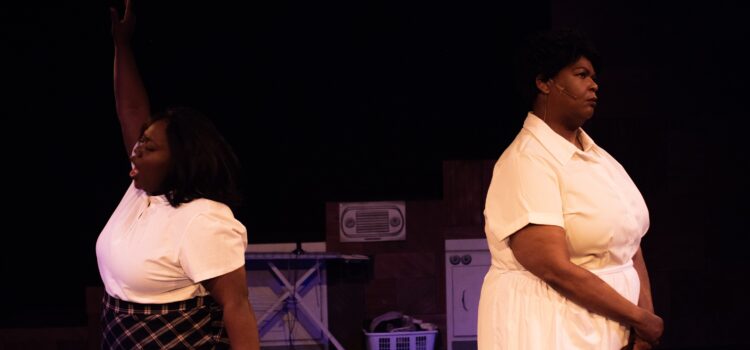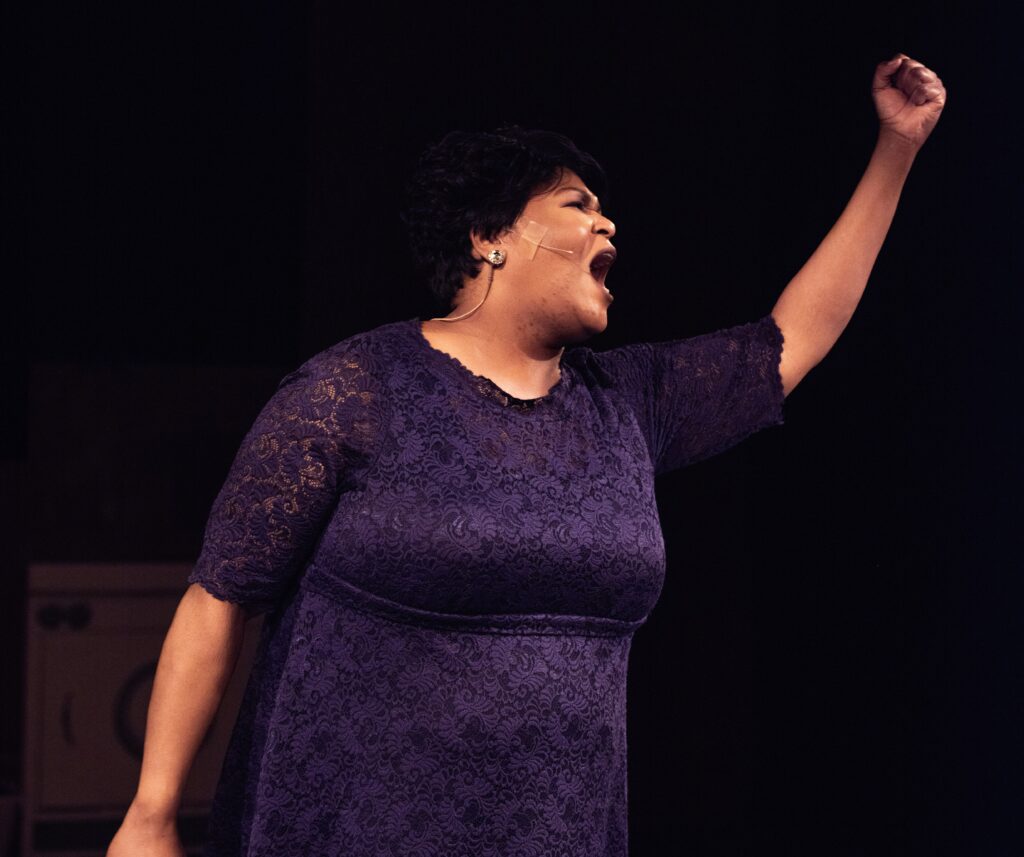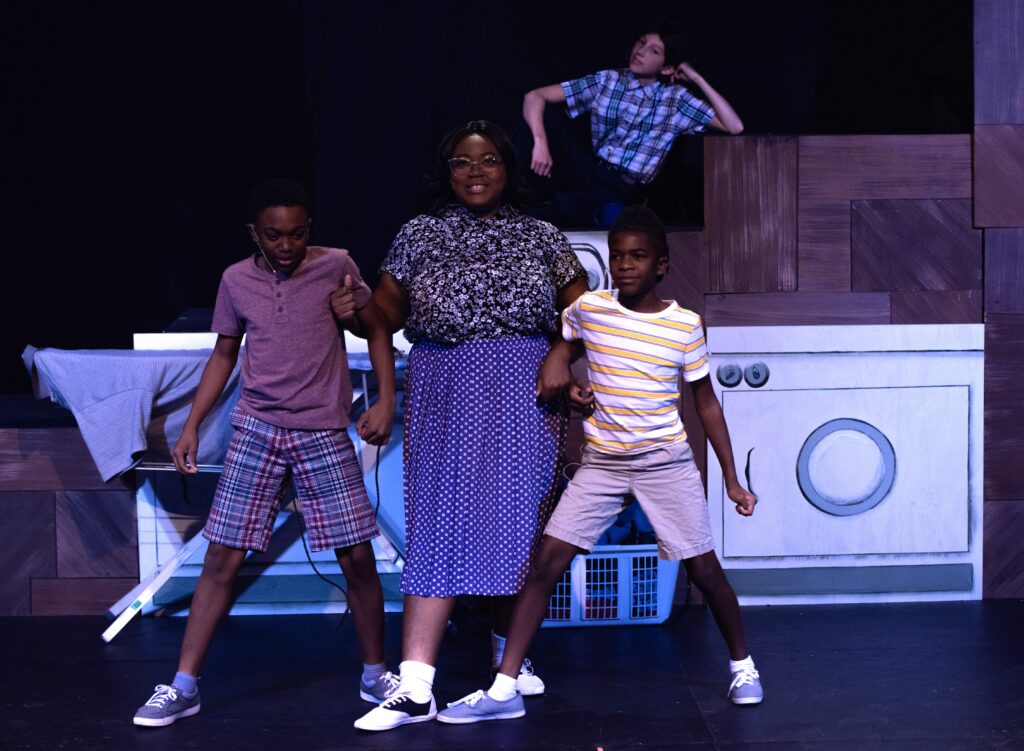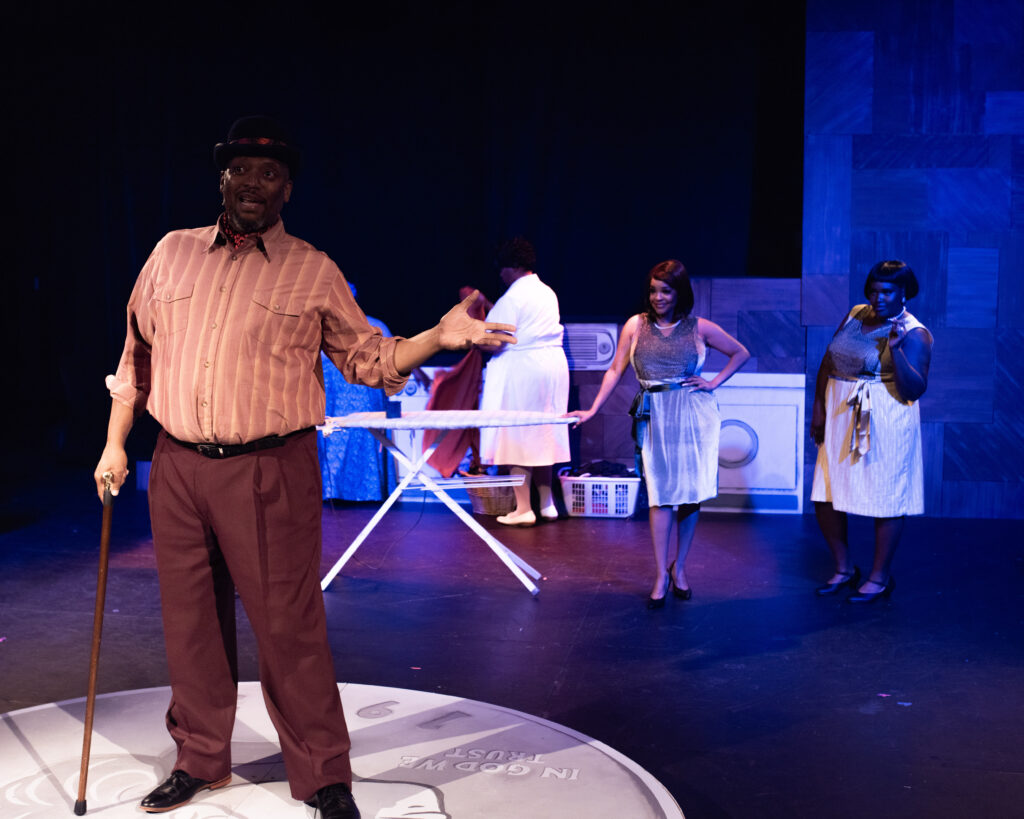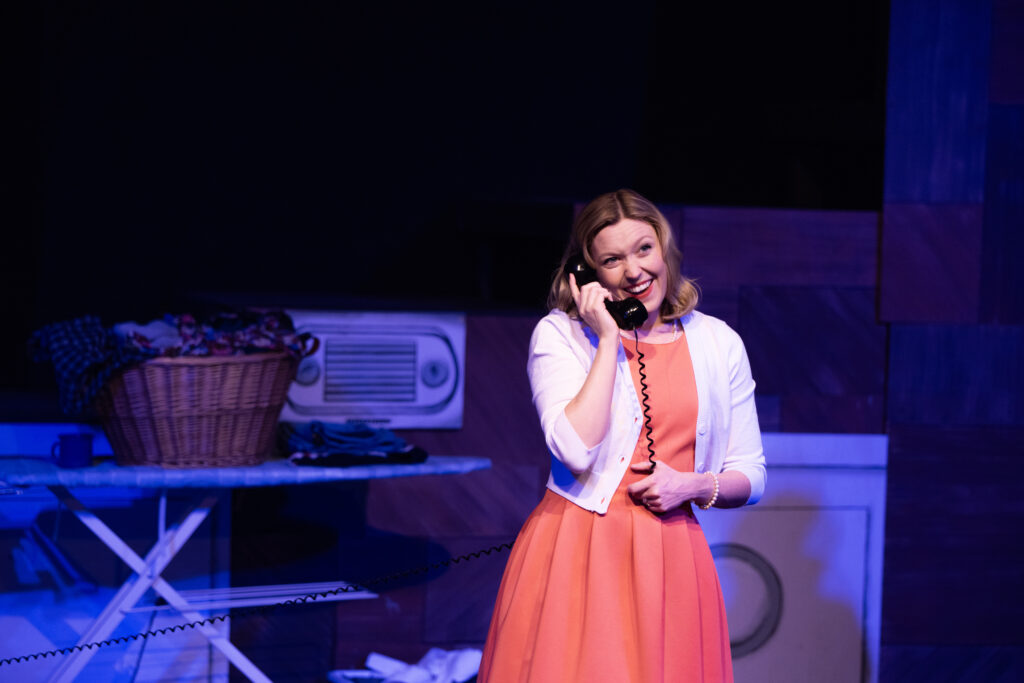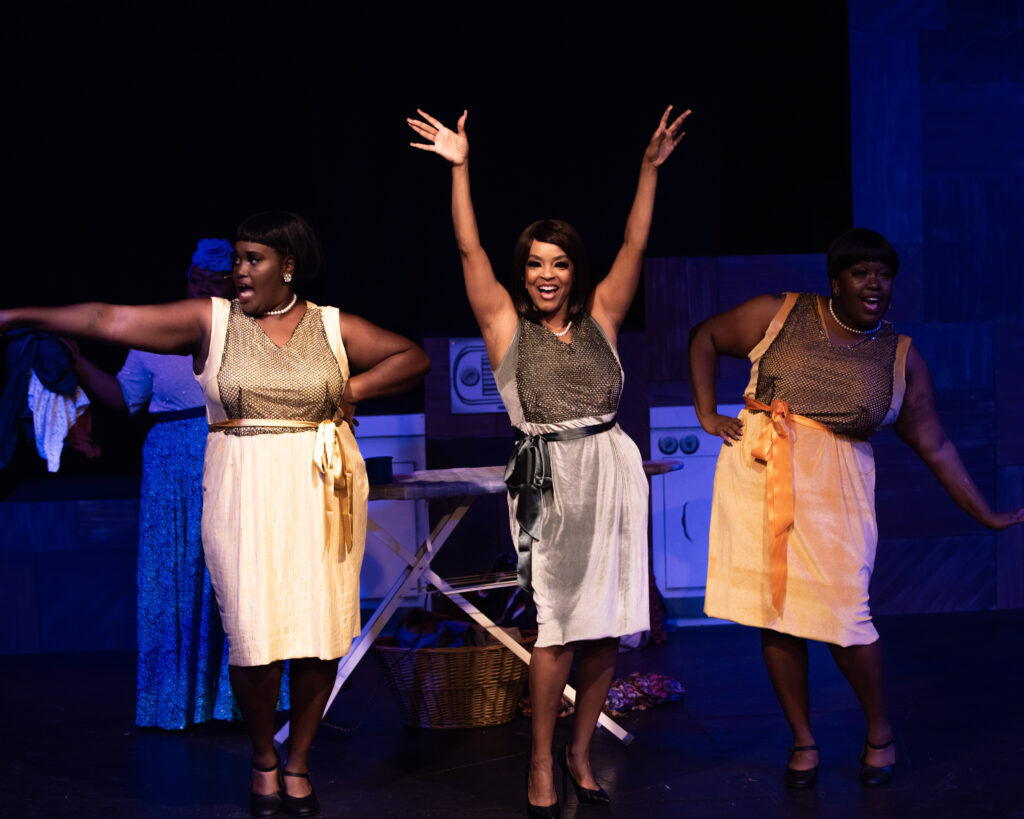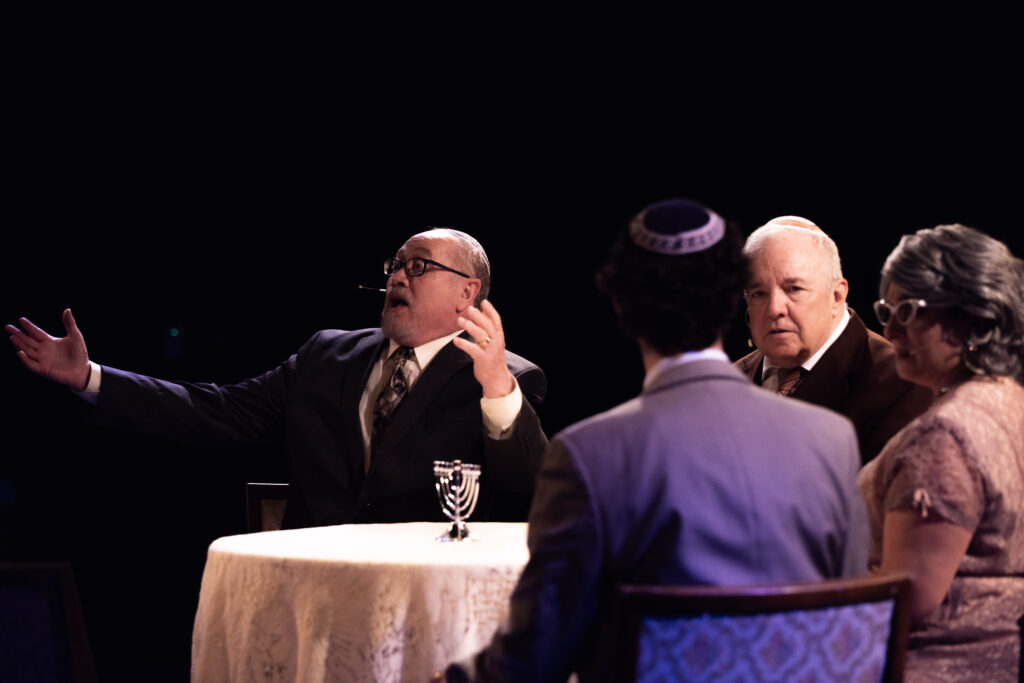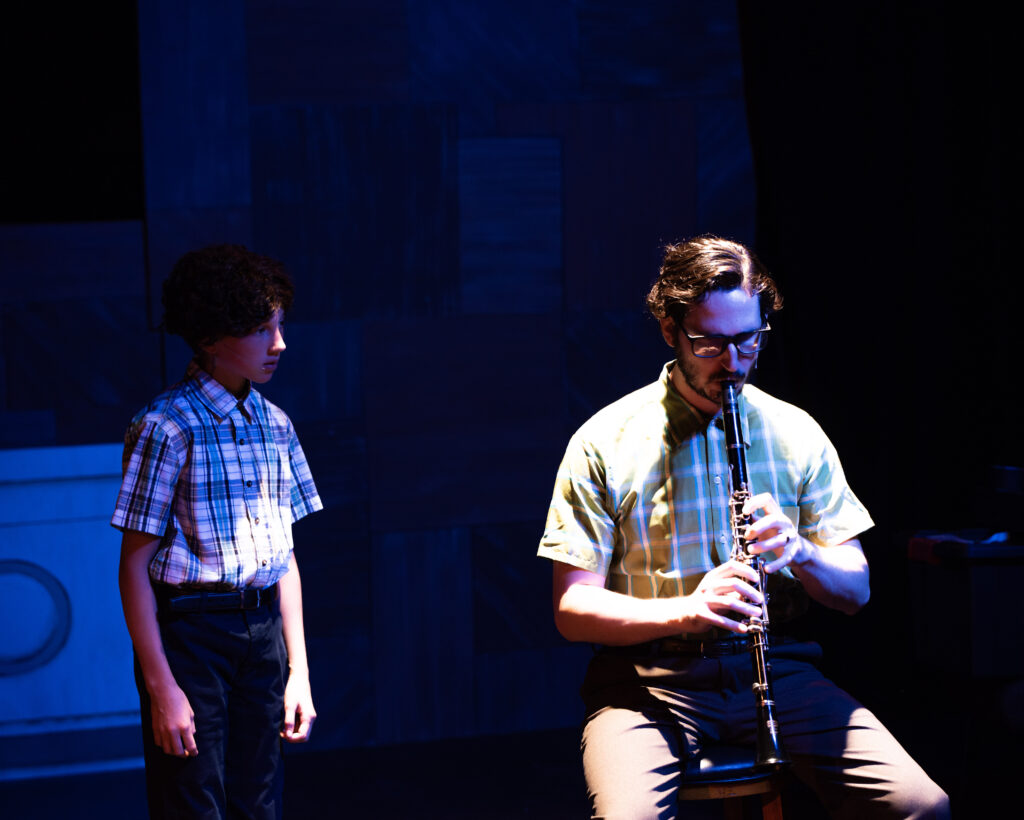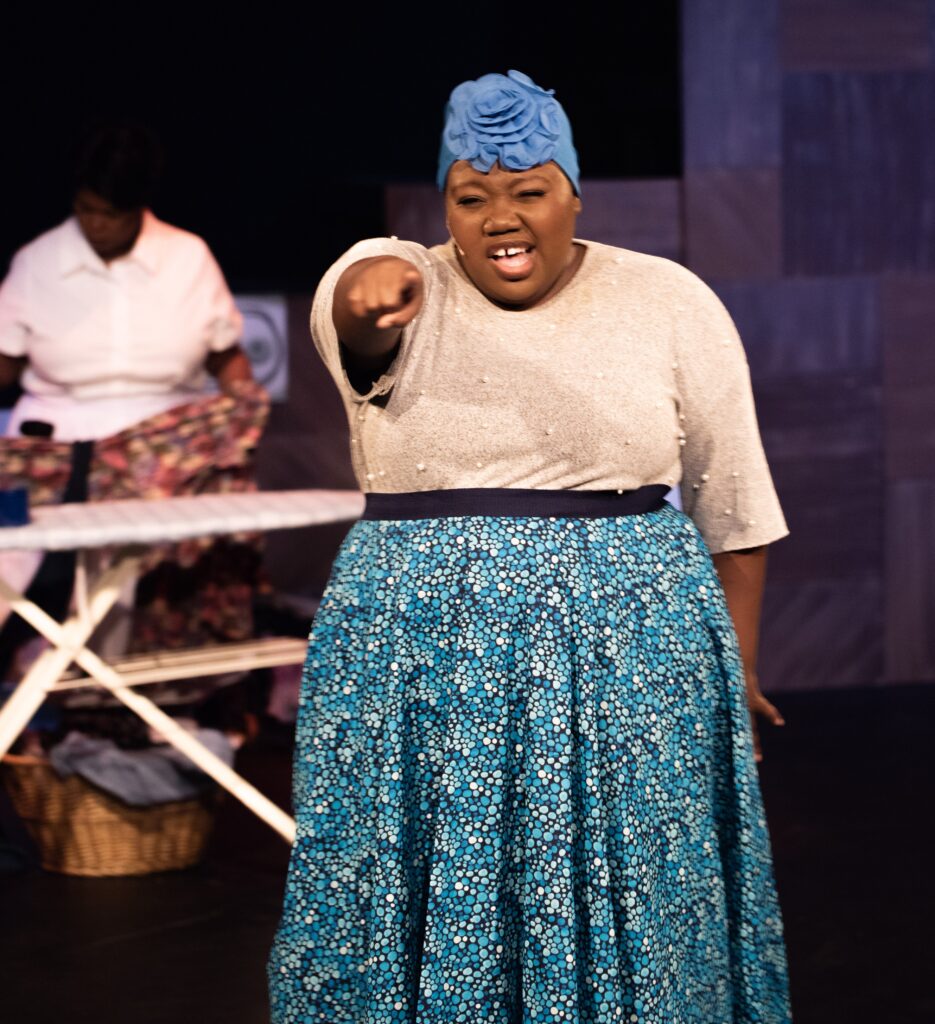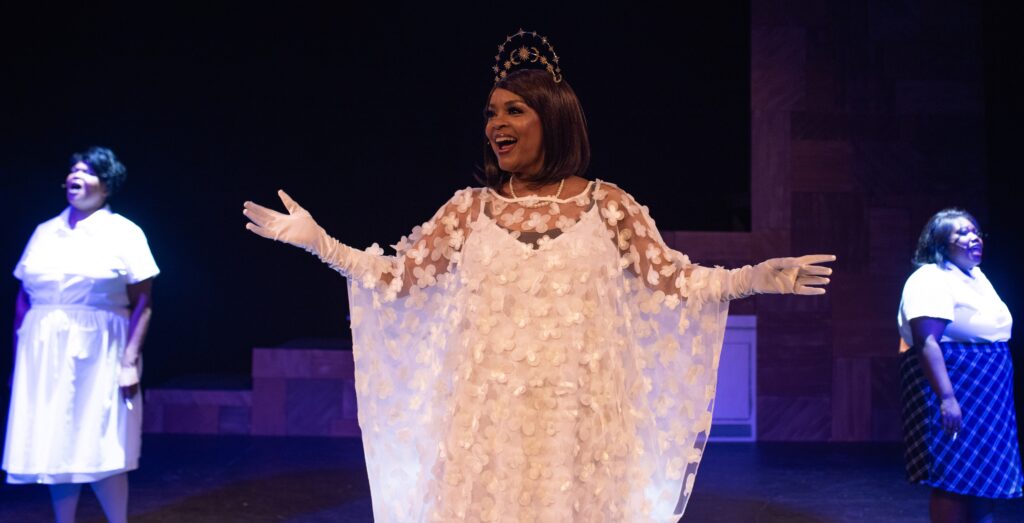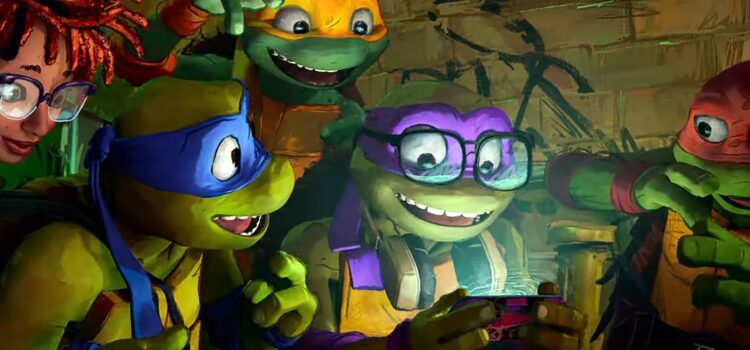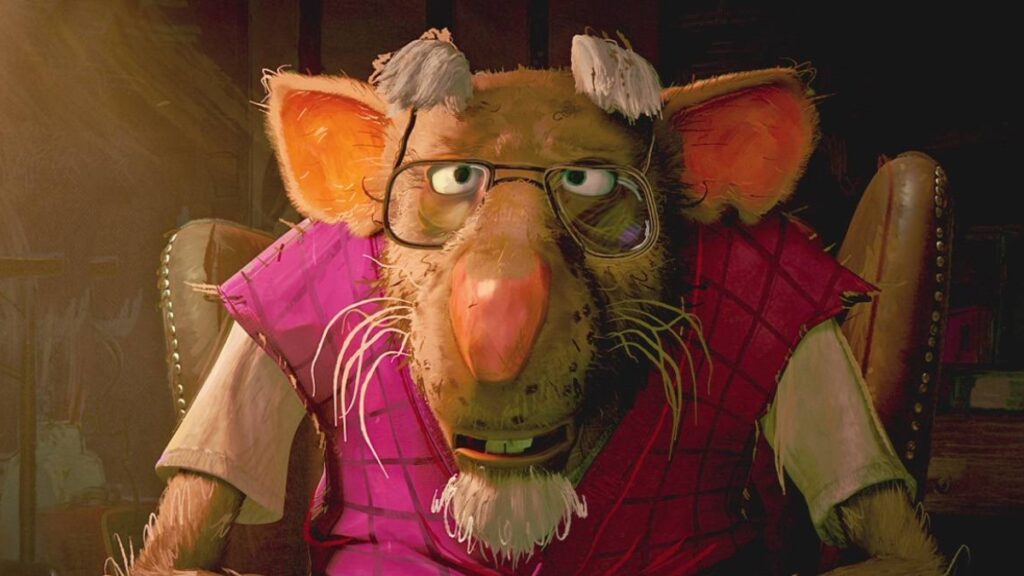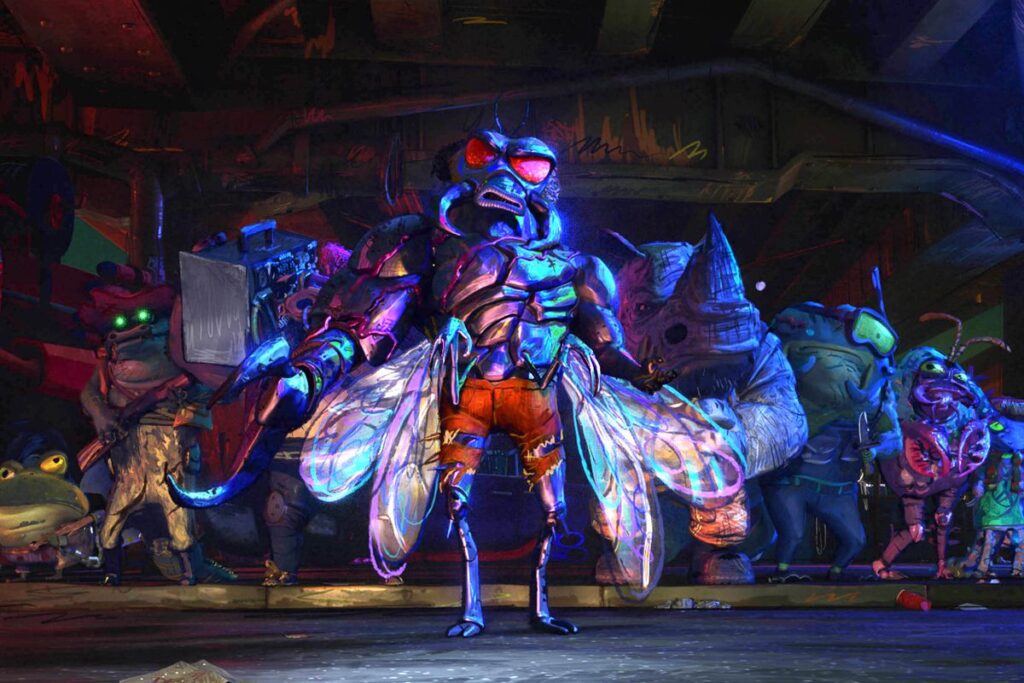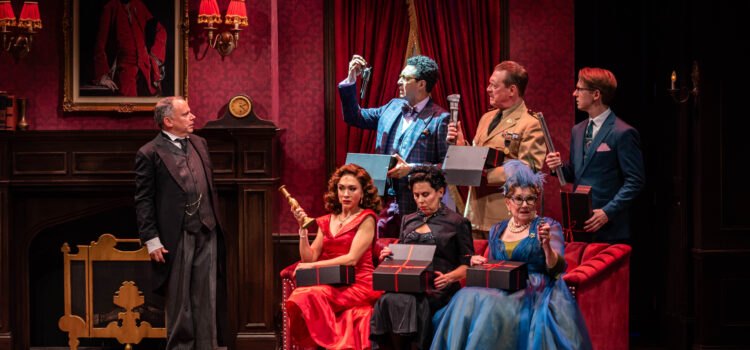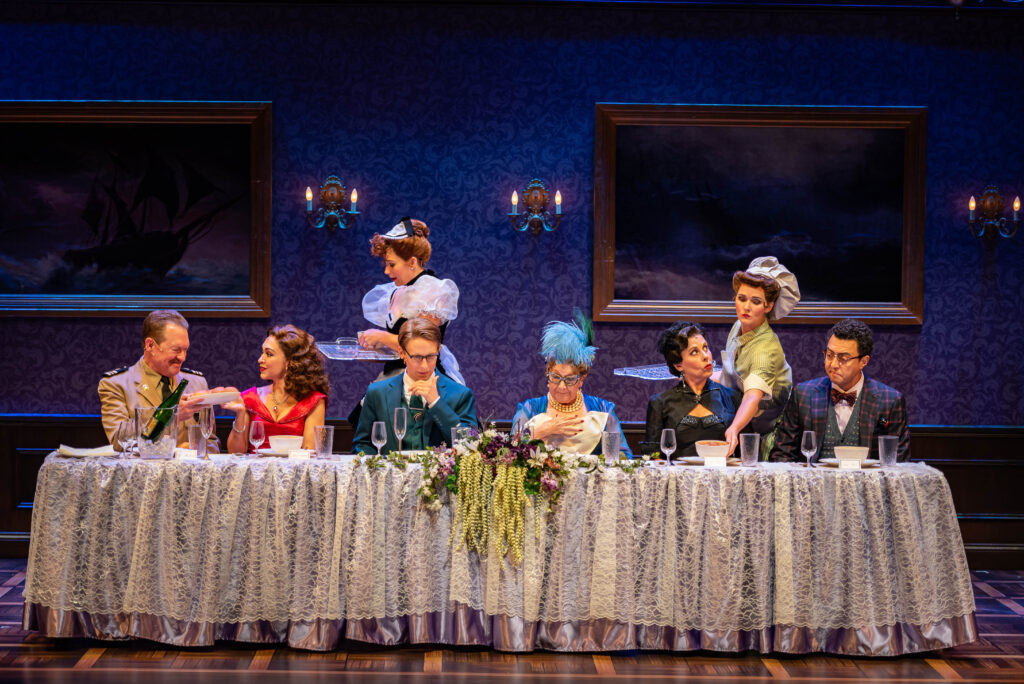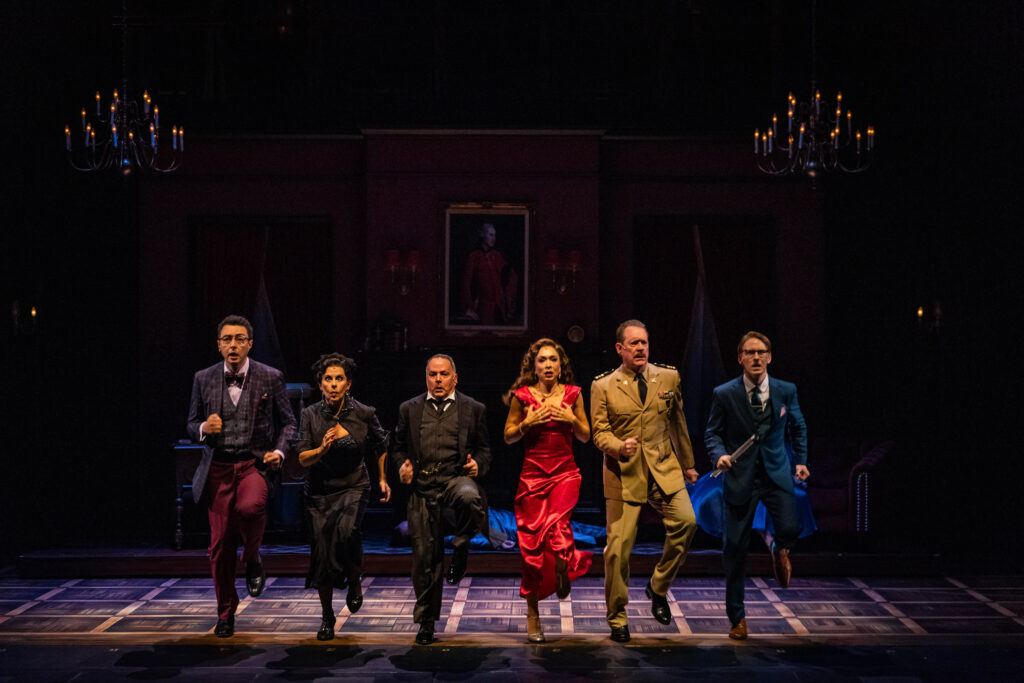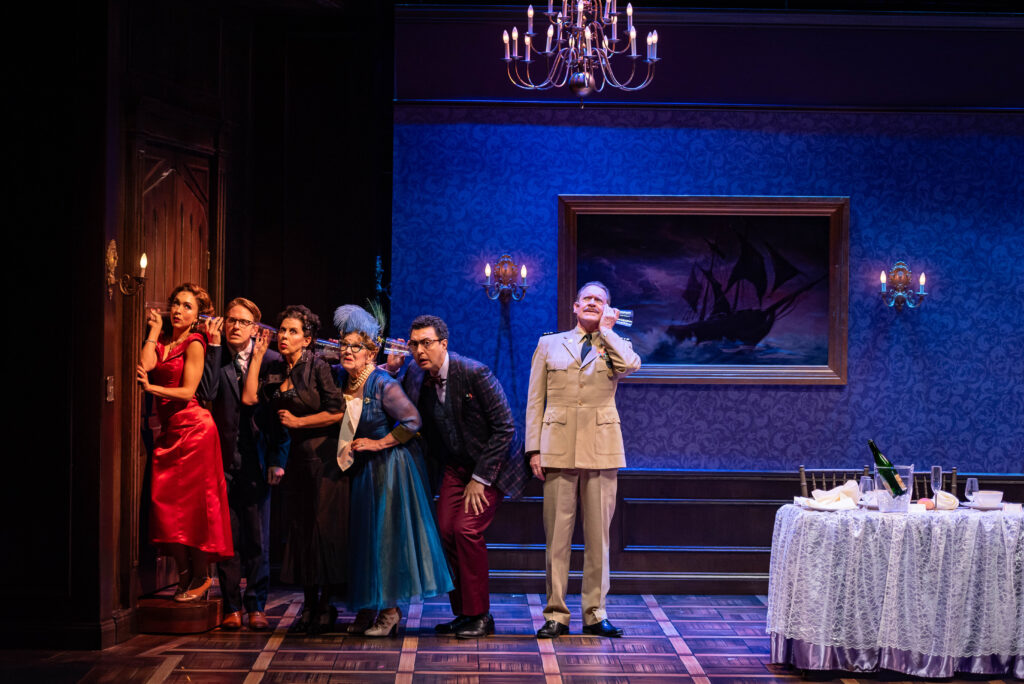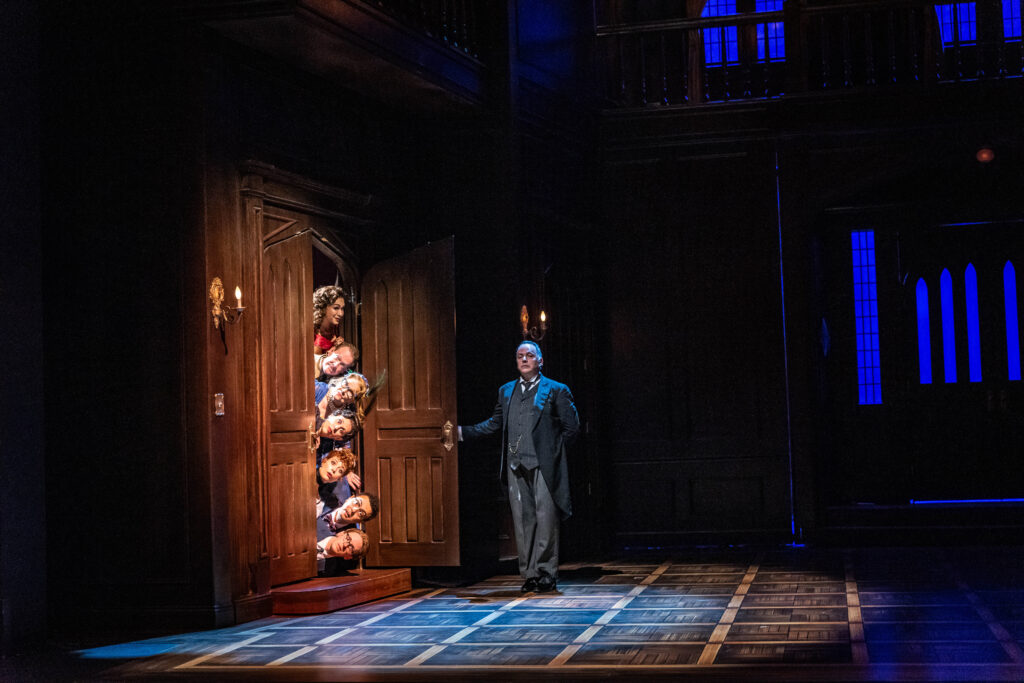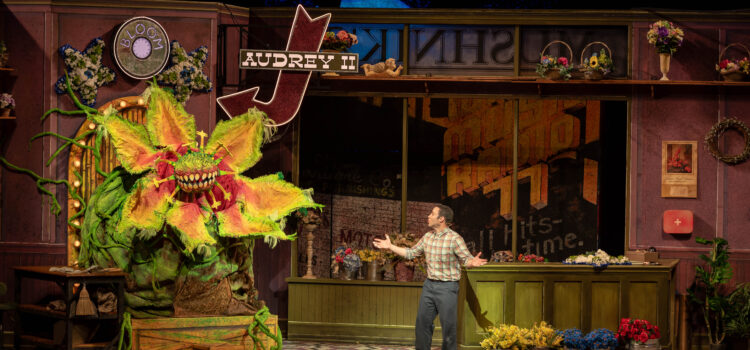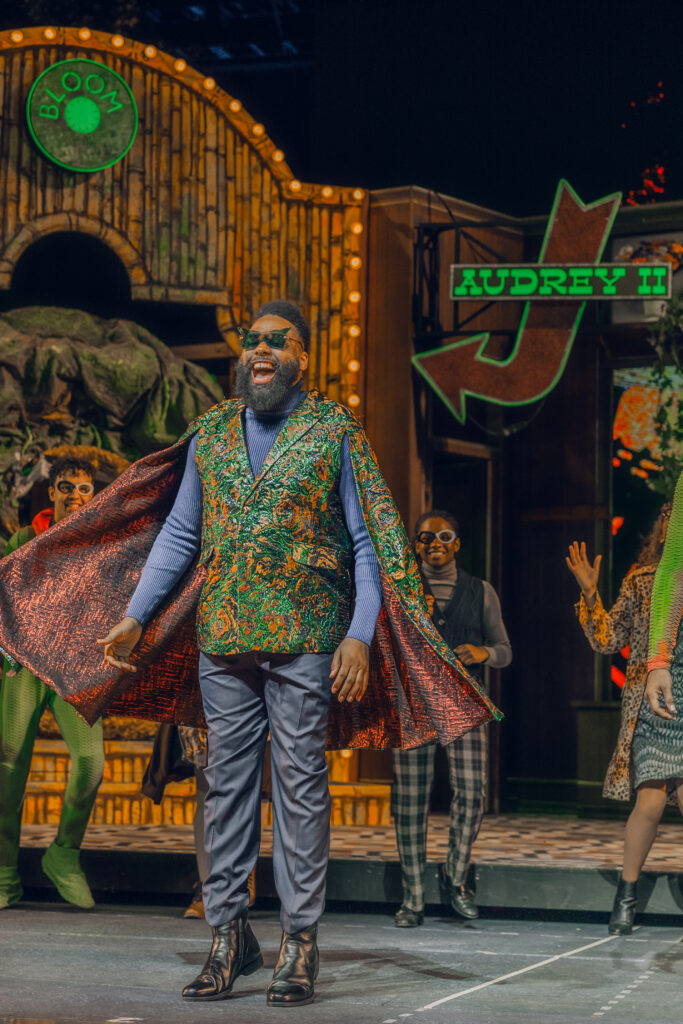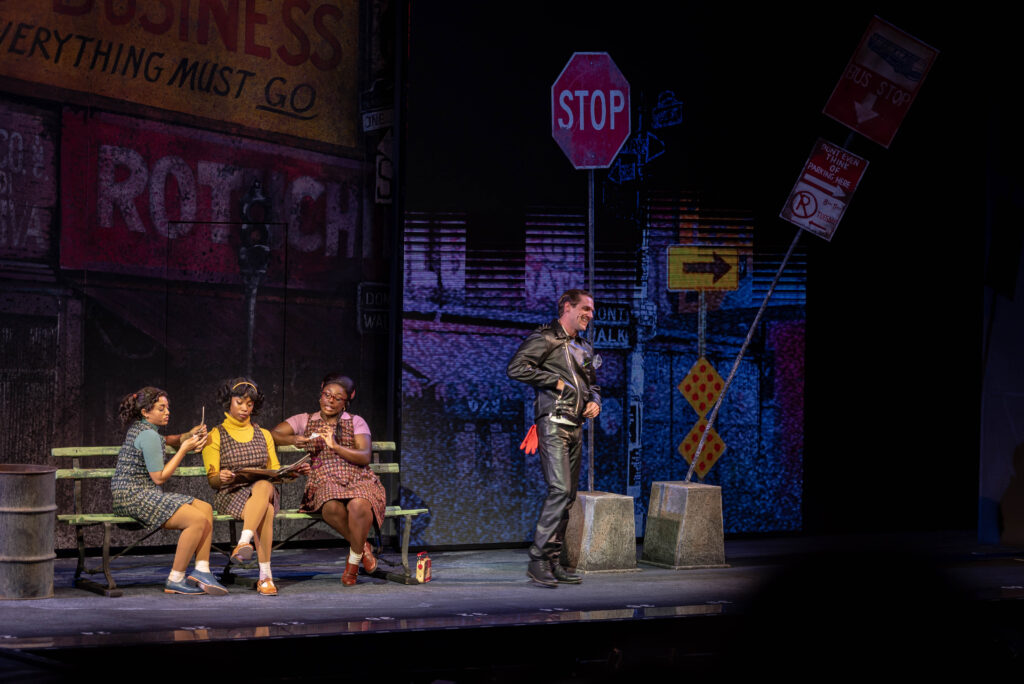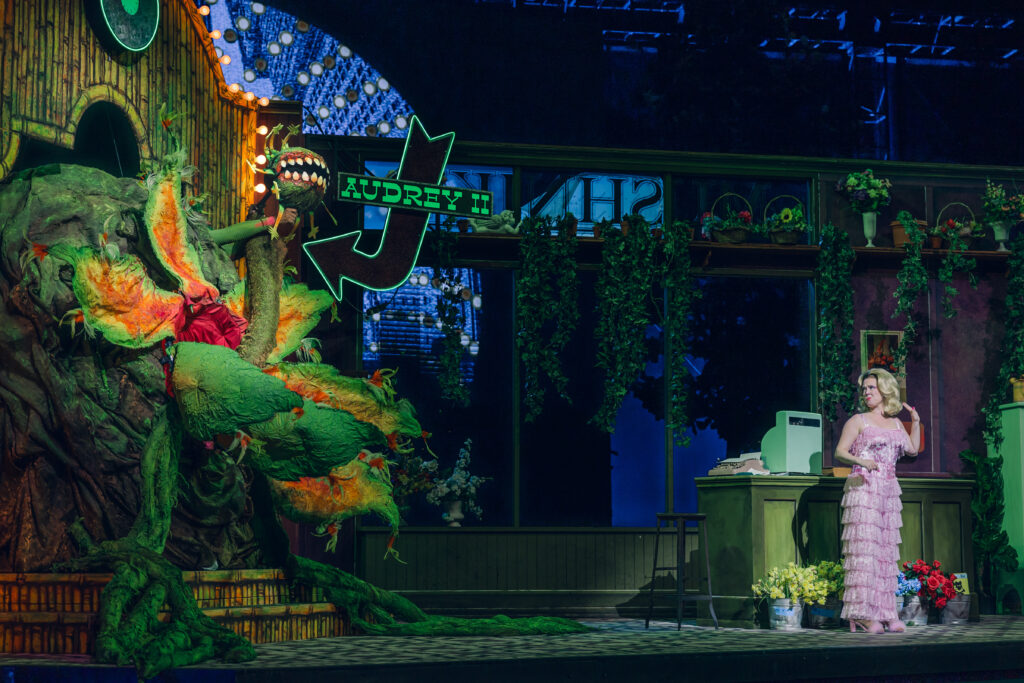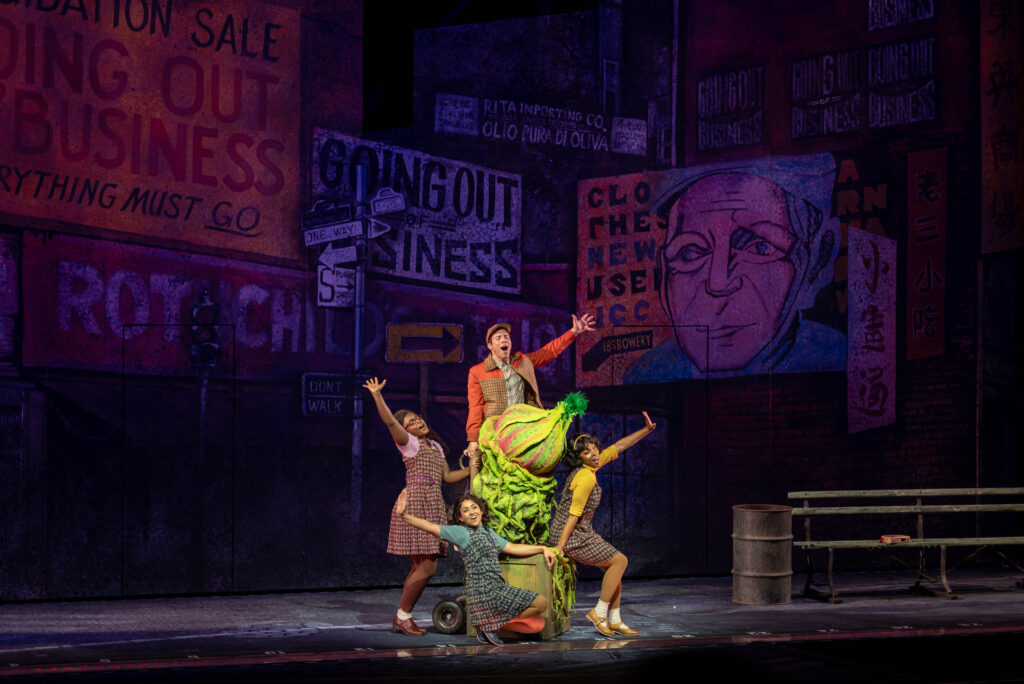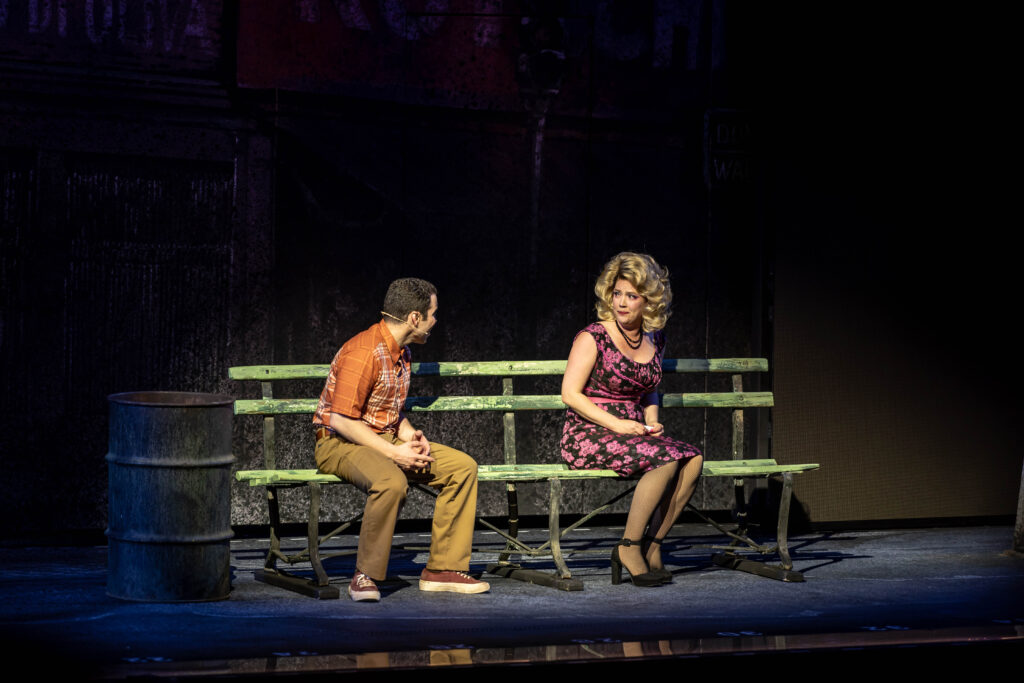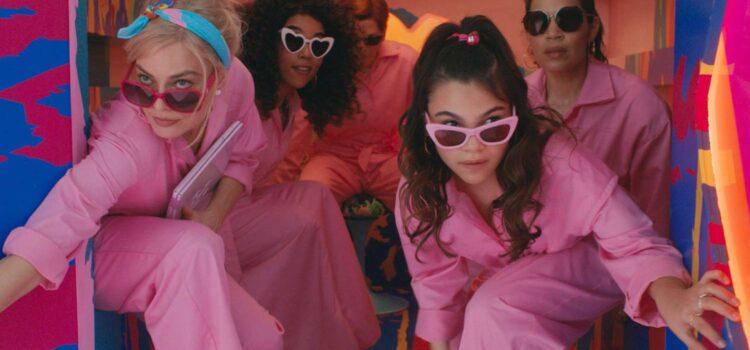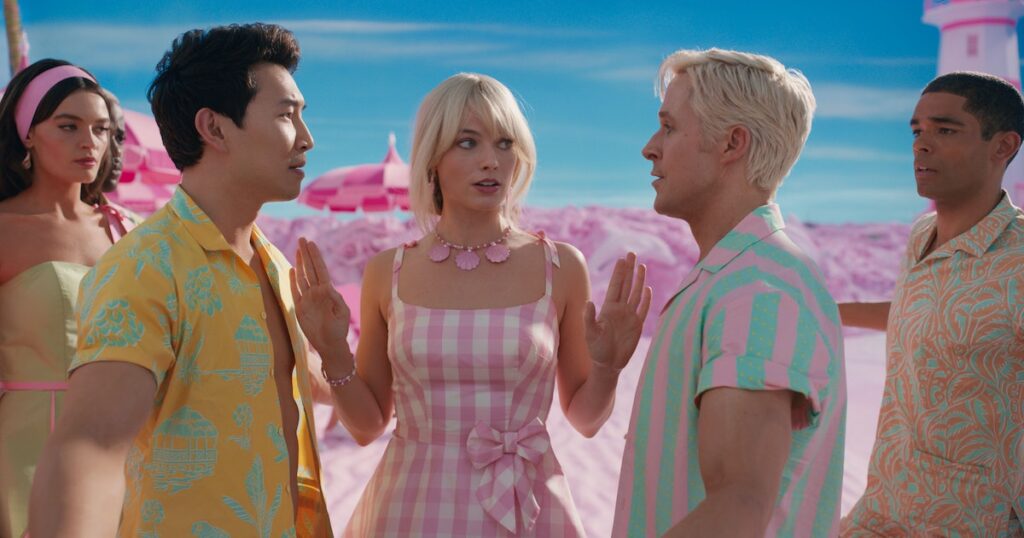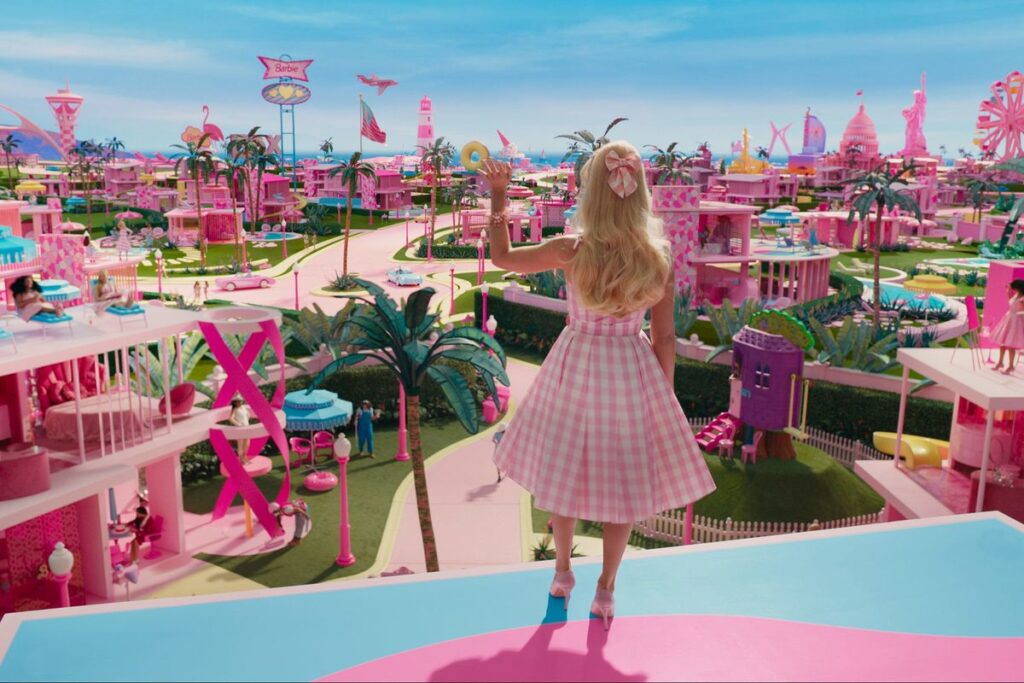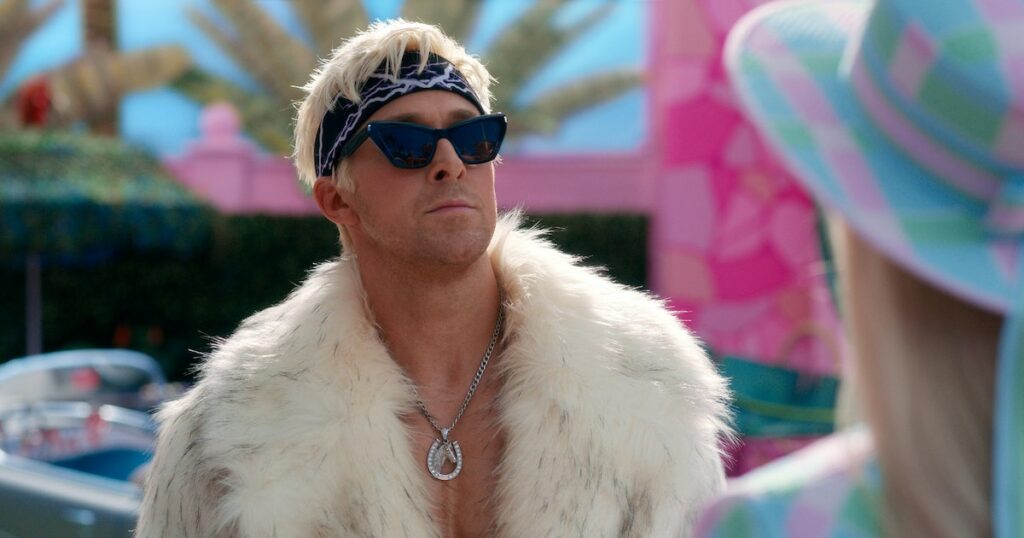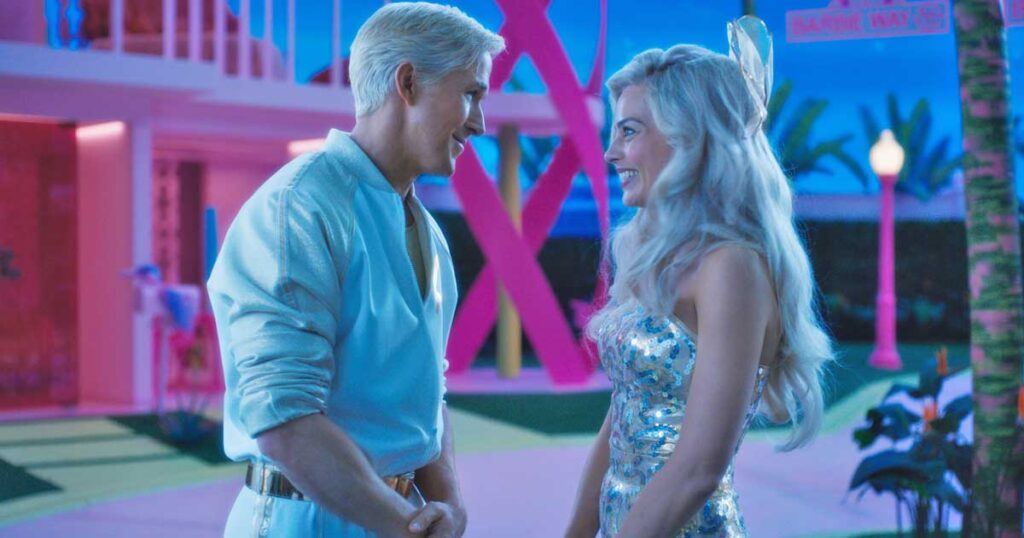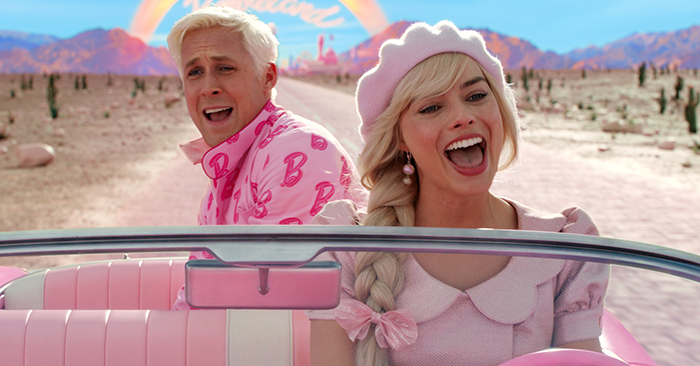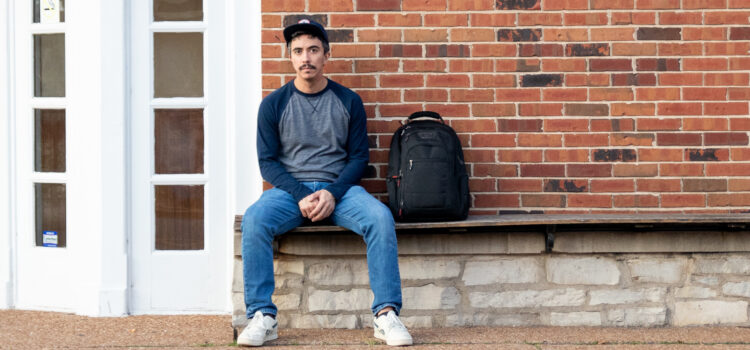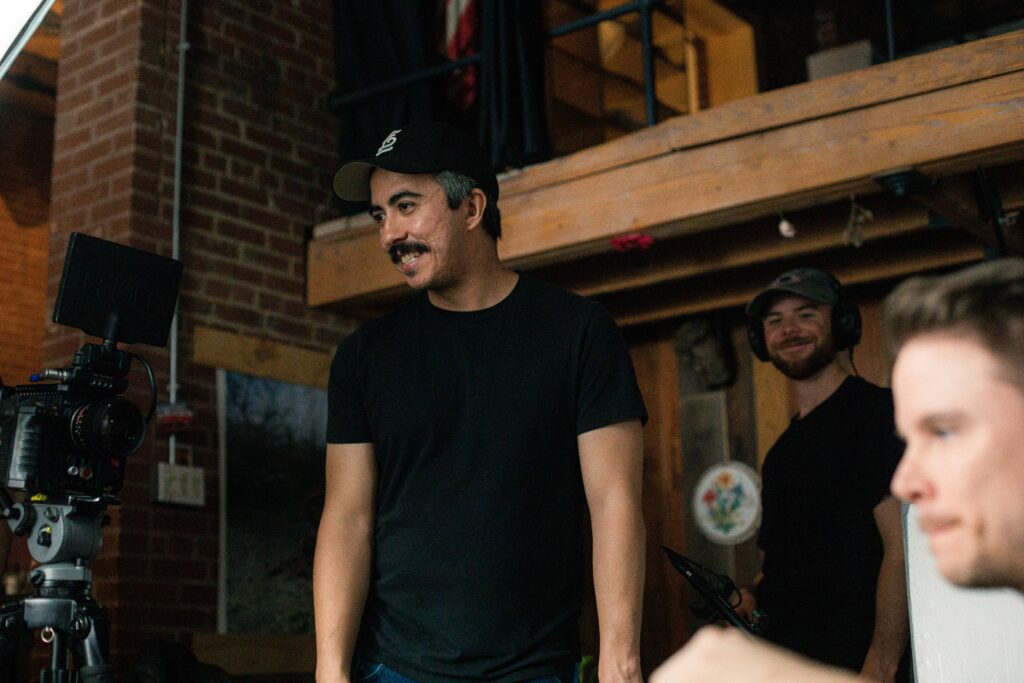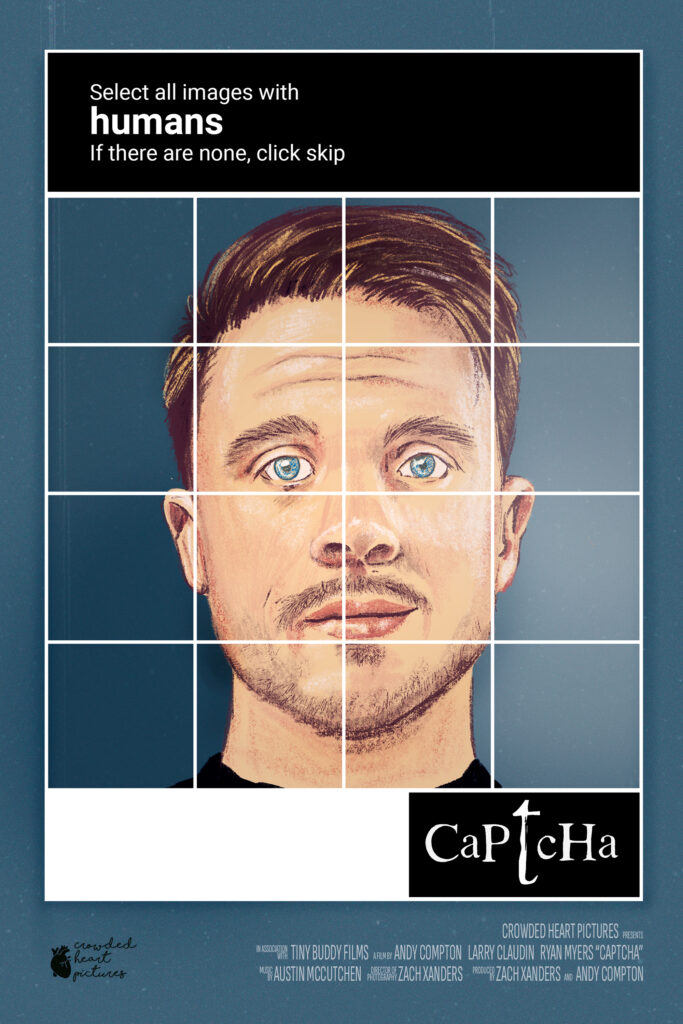By Lynn Venhaus
Ambitious and intriguing, “Landscape with Invisible Hand” takes an absurd concept and revels in its strangeness as a suburban horror story.
It’s 2036. Most of the remaining Earthlings are impoverished and unemployed after an alien species, the Vuvv, has occupied the planet for five years. Their advanced technology was promising but their labor-saving ways and bureaucratic rule have wreaked havoc on the American way of life.
For their struggling families’ survival, 17-year-old artist Adam Campbell (Asante Blackk) and his classmate Chloe Marsh (Kylie Rogers) take their budding romance to a livestream reality dating show format that earns them cash and restores their families’ livelihood. But their love story hits a bump in the road, throwing them back into chaos and mounting debt, forcing life-altering changes.
How much is art and truth worth in a topsy-turvy world? What sacrifices would you be willing to make if aliens took over, nearly rendering everything that shapes our society obsolete? What is it about adversity that brings out the worst in some people?
These are big philosophical questions raised, yet on a small canvas, and while the Americans go through the motions, depicting a dreary way of life and adapting to a drab environment, the curiosity level never rises to compelling.
This quirky sci-fi hybrid should be funnier and more heart-tugging. The economic and environmental implications are damning, and yes, the blame is on us. And while it’s never predictable and always unusual, there is just something that prevents the film from totally clicking. I am not familiar with the book, though.
Yet, there are sharp, witty barbs and some amusing visuals in writer-director Cory Finley’s adaptation of M.T. Anderson’s 2017 young adult novel. The aliens are peculiar-looking – flesh-colored squishy rectangle blobs who have weird features, bordering on the grotesque. Everything, from their voices, vocabulary, and views are out of sync with humans, and the interactions are odd. The awkwardness is always played for laughs.
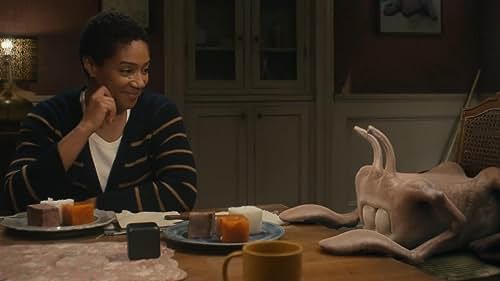
Yet, as good as this ensemble is, the plot’s constraints regarding the depressing behaviors of humans during colonization make it hard to connect with the characters, rather something to admire for its sharp criticism instead of an emotional response.
Finley centers the story on a pair of smart entrepreneurial teens, who fall in and out of love, and their vastly dysfunctional families at a time of great duress.
Now a New York-based playwright and filmmaker, Finley grew up in the Clayton suburb of St. Louis and graduated from John Burroughs School in 2007. Burroughs hosted their heralded alumnus last spring to speak to students, staff, faculty, and the community. The theatre department also produced his play, “The Feast,” in the black box. St. Louis Actors’ Studio had presented the horror-comedy-drama in 2017.
Finley, who went on to Yale, has made three feature films, demonstrating a flair for dialogue, a keen eye for detail, and an affinity for satire and dark comedy. While different, his projects have a common theme, focusing on high school students, and this one is by far the most bizarre.
His first film, “Thoroughbreds,” starred Olivia Cooke, Anya Taylor-Joy and Anton Yelchin, and became an arthouse darling that premiered at the Sundance Film Festival in 2017, earning him an Independent Spirit Award nomination for best first screenplay.
His next was the 2019 HBO movie “Bad Education,” based on a true story, and starred Hugh Jackman as a Long Island superintendent whose epic $112 million embezzlement was uncovered by a student reporter. It won the Emmy Award for best television movie in 2020.
In his third, which premiered at Sundance in January, Finley is willing to take risks, but perhaps the frustrations of this heartless story are too much of a dead end.to overcome.
Like last year’s “White Noise,” it has so many layers that it’s overly complicated. Although it’s worth investing the time to figure it out, mainly for its sheer audacity, but it does take a while to unpack.
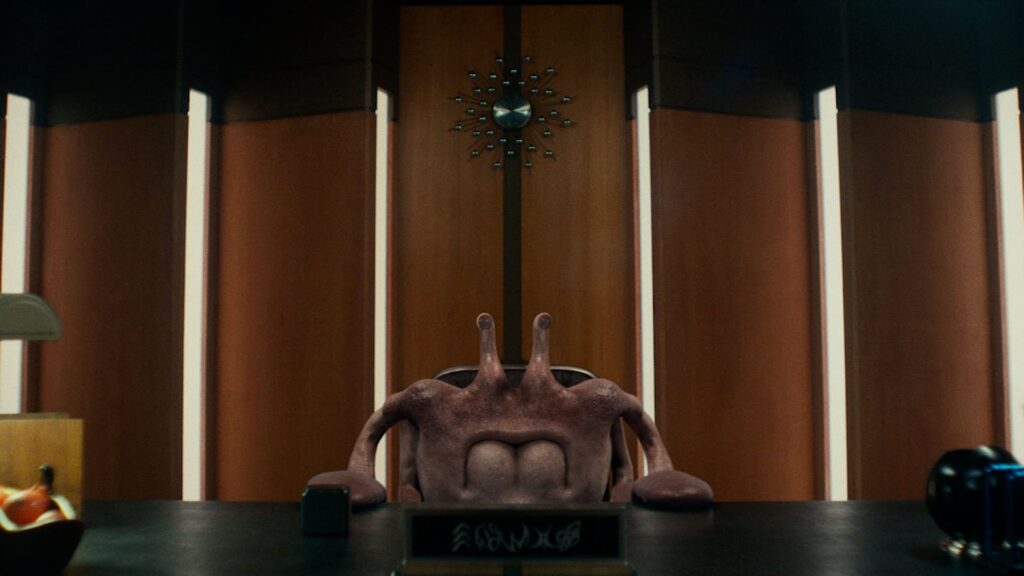
Production designer Sue Chan has given us an unsettling portrait of occupation and oppression, aided with meticulous work by art director Erik Louis Robert and set decorator Lynne Mitchell. Cinematographer Lyle Vincent matter-of-factly captures the situation’s bleakness, with editor Louise Ford focusing on the off-kilter aspects.
Promising young stars deliver solid performances – Blackk’s defiance and desire to push through all the hardship rings true. The young actor, first noticed on “This Is Us” as Randall’s daughter Deja’s boyfriend Malik, is one to watch.
So is Rogers, who plays the young Beth on “Yellowstone” and reminds me of a young Chloe Grace Moretz. Her financial motivations become apparent, and there is hell to pay for deceiving those aliens. The Vuvv may be incapable of love, but they can spot phonies easily.
Each has a surly sibling in this – Chloe’s sullen brother Hunter Marsh is portrayed by Michael Gandolfini, who doubles down on ‘doesn’t play well with others’, and Brooklynn MacKinzie is Natalie, a typically annoying sister, who finds fault with what Adam’s up to – usually drawing or painting.
Tiffany Haddish is credible as out-of-work attorney Beth Campbell, who is an exasperated but tough mother trying to hang on to her homestead as her world crumbles all around her/ Josh Hamilton has the most fun as a desperate dad willing to do whatever it takes to fit in with the Vuvvs and has some key scenes sucking up to the superiors.
Nevertheless, the laughs become intermittent and the points on race, class and gender seem less effective as the film winds down its 1 hour, 45-minute runtime. With all its flaws, it is still thought-provoking, but interest wanes. What started strongly as something with a different point of view doesn’t draw us in enough to satisfy.
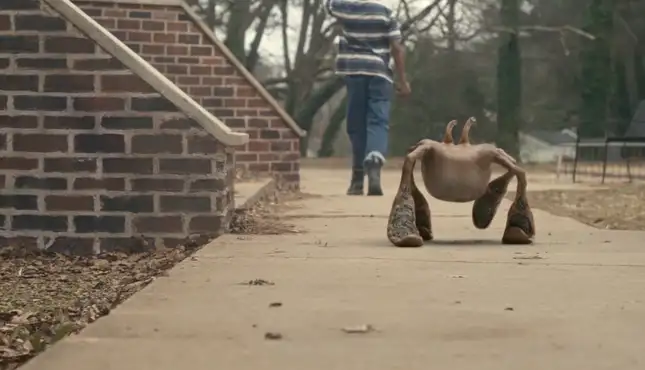
“Landscape with Invisible Hand” is a 2023 sci-fi comedy-drama directed by Cory Finley and starring Asante Blackk, Tiffany Haddish, Kylie Rogers, Josh Hamilton, Michael Gandolfini, and Brooklynn MacKinzie. It is rated R for language and brief violent content and 1 hour, 45 minutes. It opens in theatres Aug. 18. Lynn’s Grade: C+
Note: this review was written during the 2023 WGA and SAG-AFTRA strikes. Without the labor of the writers and actors currently on strike, the movie being covered here wouldn’t exist.

Lynn (Zipfel) Venhaus has had a continuous byline in St. Louis metro region publications since 1978. She writes features and news for Belleville News-Democrat and contributes to St. Louis magazine and other publications.
She is a Rotten Tomatoes-approved film critic, currently reviews films for Webster-Kirkwood Times and KTRS Radio, covers entertainment for PopLifeSTL.com and co-hosts podcast PopLifeSTL.com…Presents.
She is a member of Critics Choice Association, where she serves on the women’s and marketing committees; Alliance of Women Film Journalists; and on the board of the St. Louis Film Critics Association. She is a founding and board member of the St. Louis Theater Circle.
She is retired from teaching journalism/media as an adjunct college instructor.

